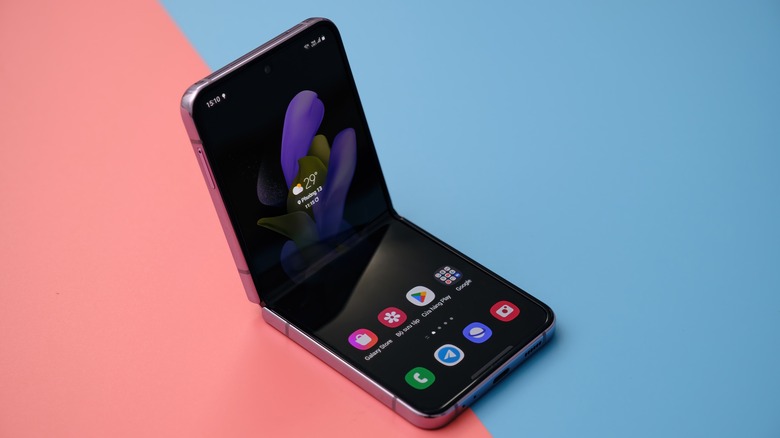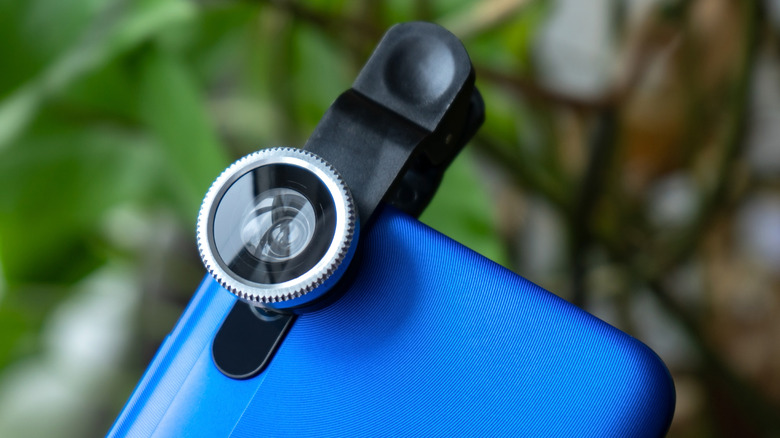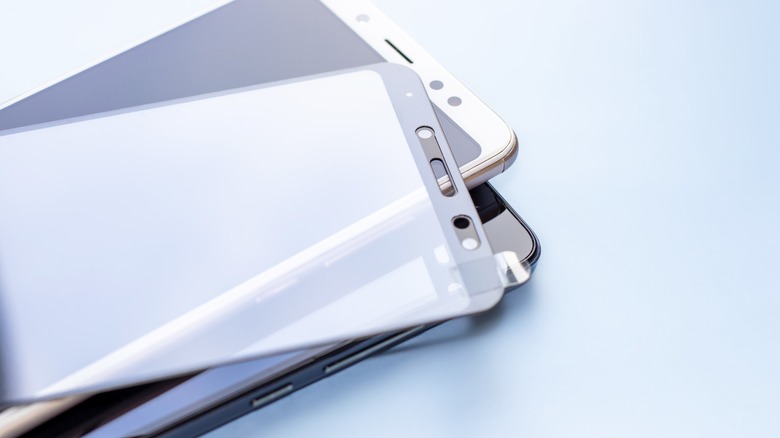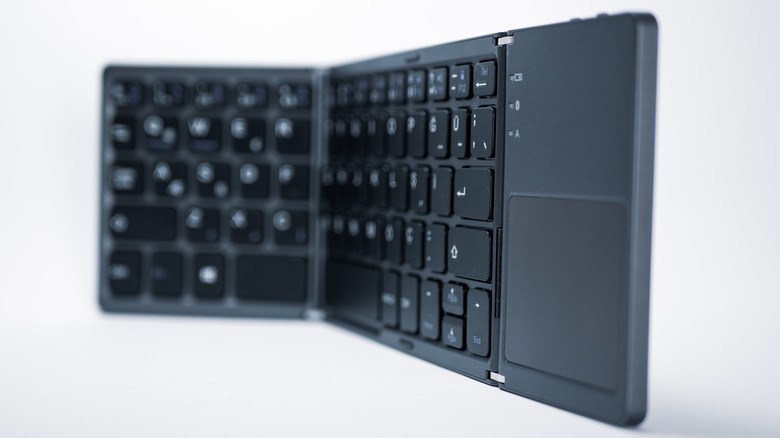Samsung Galaxy Accessories That Are A Total Waste Of Money
Whether you have a mid-range Galaxy A Series smartphone or a high-end flagship Galaxy S model, there's a good chance you dropped at least a few hundred dollars on it. It makes sense that you'd want to pick up a few accessories to get the most use out of the device as well. There are certainly some excellent accessories on the market, including first-party options from Samsung. There's no arguing that the Standing Cover with Pen from Samsung isn't a great option for Galaxy Z Fold 4 owners, for example.
With that said, the market is packed full of third-party accessories, some of them more useful than others. What works for one person may not be worth the cost for another, while some accessories are simply garbage no matter who you ask. What about the ones that fly under the radar, seemingly offering something useful, but not panning out as practical in the end? They're the ones to watch out for, as they're ultimately a waste of money and — more often than not — destined for a landfill.
Clip-on camera lenses
Smartphone camera technology has come a long way in a relatively short period of time, and Samsung is no exception. The company not only sells high-end Android smartphones under its Galaxy S and Galaxy Z lines, but it also manufactures mobile camera hardware, including the ridiculously pixel-dense ISOCELL HP3 sensor. A camera sensor is only part of the equation, however, as optical glass plays just as important of a role in the quality of an image or video, particularly if you want to record or capture something at a distance.
Clip-on lenses used to be a popular option for augmenting the camera built into a smartphone; they come in multiple varieties, including fisheye, telephoto, and macro. A telephoto clip-on lens can, for example, offer optical zoom for capturing far-away subjects, while a fisheye lens is essentially an ultra-wide lens that can be used to capture tight spaces. Back when smartphones only had a single camera paired with an unremarkable lens, these accessories proved marginally useful. Now that most handsets have two or more rear cameras, they're largely a waste of money.
The Galaxy S22 Ultra, for example, has a 108-megapixel wide-angle lens on the back, as well as a 12-megapixel ultra-wide lens and two telephoto cameras — not to mention the Space Zoom "super resolution" option. There's no reason to use a clip-on lens with a phone's camera if the phone already packs multiple different high-quality lenses. Even in cases where there are only one or two cameras, computational photography like in Google's Pixel phones can often simulate different types of lenses (like fisheye) within seconds at the software level. In comparison, clip-on lenses may create image distortions and light leaks due to poor fit or construction, making images worse instead.
Paper-like textured screen protectors
Samsung is notorious for bringing tablet-tier stylus functionality to smartphones. The Galaxy Note line may be effectively dead, but the S-Pen lives on with the latest and greatest Galaxy S and Galaxy Z Fold models. While the latter handset doesn't lend itself well to the use of screen protectors due to its foldable nature, it's sensible to pop one on a new Galaxy S phone to help protect the expensive device.
Even the smallest Galaxy S phones sport pretty big displays (relatively speaking), and when you combine that with the S-Pen, it's no surprise some users have leveraged the smartphones as essentially portable art stations. Targeting that demographic are accessory makers that sell textured screen protectors, commonly doing so with marketing that claims the texture results in a realistic paper-like drawing experience. While some people do enjoy the textured experience, these accessories are unnecessary on phones and will cost you more money in the long run.
As many tablet users have discovered, textured screen protectors are effectively a very fine sandpaper that quickly wears down stylus tips, resulting in frequent replacements. Unlike the Apple Pencil, Samsung's S-Pen has a very thin nib, which means it'll wear down particularly fast. That may not be a deal-breaker for some users, but the odds are high that such textured screen protectors won't offer you any practical benefits.
Folding portable Bluetooth keyboards
Modern smartphones almost universally have big screens, which is why devices like the iPhone SE are so unique. The idea of a phablet is a thing of the past as a result, but the general idea that inspired that clunky name remains: these large-screened phones are very similar to small-screened tablets. That means you can potentially use them to get some work done while away from your computer. Who needs an iPad mini with its 8.3-inch screen when the Galaxy Z Fold 4 packs 7.6 inches of screen real estate?
Any effort to get work done on a smartphone necessitates the use of an external keyboard, however, and that's where you have to be careful. There are a huge number of folding keyboards available through retailers like Amazon that purport to offer a solid typing experience in a highly portable form factor. However, the reality is that the small form factor requires a sacrifice, and the sacrifice comes in the form of small key sizes. In addition, most folding keyboards fall into the budget range, and as a result, they may feature a poorly-made hinge that breaks sooner rather than later.
Rather than spending money on a folding keyboard that will be hard to type on and is susceptible to damage, you should consider a slim-but-sturdy fixed Bluetooth keyboard that doesn't take up much space in a bag, while still offering a solid typing experience. Arguably the most popular example of this type of keyboard is Logitech's K380 — in fact, browse a subreddit where people share images of their setups like Workspaces, and there's a good chance you'll spy one of these keyboards within minutes of scrolling.



